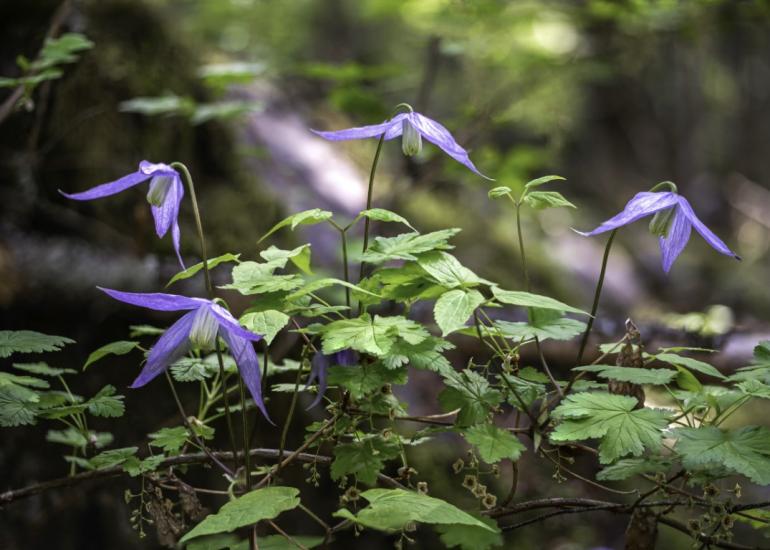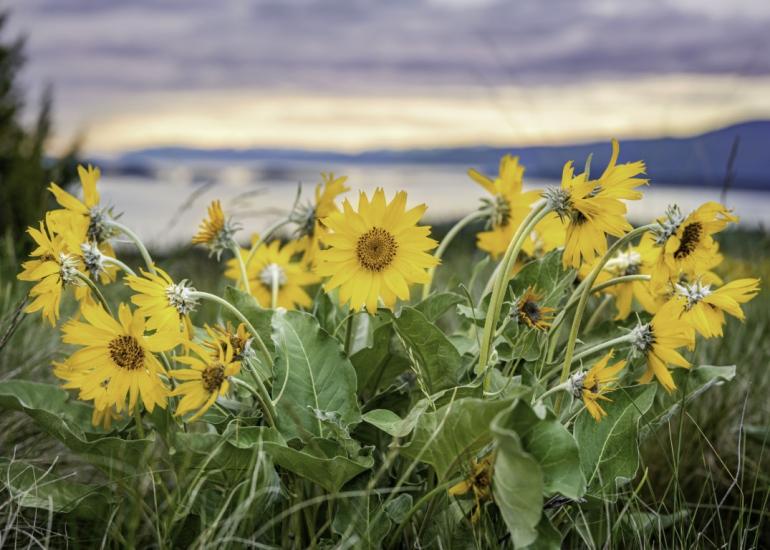6 Favorite Montana Spring Wildflowers

We’ve all heard the expression: “April showers bring May flowers.” In Montana, though, the appearance of the spring wildflowers have more to do with the receding snow than the rain per se. Montana hosts a great diversity of wildflowers, both in the mountain west as well as the eastern plains. However, once the snow melts here in the west and the soil warms just a little, there are a unique series of early flowers that burst forth in early May – especially at the lower elevations. This is one of my favorite times of year to get out and enjoy our incredibly beautiful state.
Its great to see things green up after a long Montana winter. About the only downside to this time of year are the ticks, but that is a small price to pay for the yellows, purples, and pinks of the first wildflower blossoms.
So here are my 6 personal favorite Montana spring wildflowers that I find in our western mountains.
For more information on each of these, just click on its name for its Montana Filed Guide web page. Of course, these are not the only spring wildflowers, and other Montana regions have a different mix, so I am sure others may have different favorites.

Glacier Lily - Erythronium grandiflorum.
I find this to really be the most striking early wildflower. Not only are their yellow flowers one of the first colors to appear behind the melting snow, but they can be overwhelmingly prolific. They can cover a complete mountain meadow in a carpet of yellow. They are harbingers of warmer weather to come. They are also one of the wildflowers that you can find well into July if you go up high enough. In effect, hiking higher and higher is like a time machine. Eventually, you will reach an elevation where the snow has just melted out, and there will be the spring Glacier Lilies again!

Few-Flowered Shootingstar - Dodecatheon pulchellum.
Right there with the Glacier Lilies, and about the same size, are the brilliantly pink Shootingstars. They are very widespread, being found in grasslands to wet meadows; valleys to alpine. They can often grow together with Glacier Lillies, and their pink is a lovely counterpoint to yellow of the Glacier Lilies.

Fairy Slipper - Calypso bulbosa var. americana
Orchids have the reputation of being delicate, fragile, hard to grow flowers from tropical rain forests. It may be a surprise to learn that, according to the Montana Field Guide website, there are actually approximately one dozen different species of orchids here. The Fairy Slipper is the one I see most often in early May. It is tiny, only about 3 inches tall, and can often be missed if you are not looking for it. Keep an eye out for it – even with its diminutive size, it is a stunning piece of Nature.

Purple Clematis - Clematis occidentalis
I love the gentle shade of purple of this early flowering Montana Native. Although it can grow along the ground, I also often see long vines of flowering clematis reaching skywards as it climbs through and over other bushes. It is one of the few wildflowers than give welcomed color well above the ground.

Arrowleaf Balsamroot - Balsamorhiza sagittata
You could say that the Arrowleaf Balsamroot is the “granddaddy” of all the early spring flowers. Appearing in mid-May, it is found across the whole state of Montana, but particularly common in low elevation grasslands and open ponderosa pine woodlands. It is clearly a member of the sunflower family, and the flower heads can often be seen tracking the sun. It is the largest wildflower on this list. Somewhat like Glacier Lilies, it can carpet a whole hillside. Its flowering stems were peeled and eaten by Native Americans and tastes a bit like celery.

Bitterroot - Lewisia rediviva
Last, but certainly not least, is the Bitterroot – Montana’s state flower. For those not familiar with the Bitterroot, it is a very low-lying, often light pink flower commonly found on low elevation, gravelly or sandy, well-drained, usually sparsely-vegetated soil. Found along the base of the mountains, it obviously gave its name to Montana’s Bitterroot Mountains. It generally flowers in early to mid-May. Its roots were an important early food source to area tribes, especially the Salish and Kootenai. Lewis and Clark “enjoyed” bitterroot on their travels through our state. And yes, it is very bitter! These tribes still honor the plant with their annual Bitterroot feasts in early May.
These are my favorites – perhaps you have others. Leave your list in the comments below.